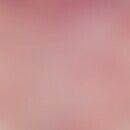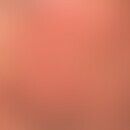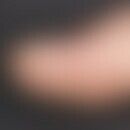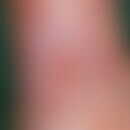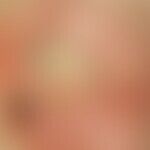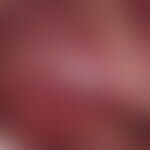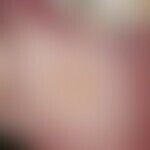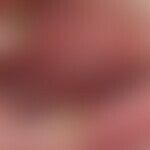Synonym(s)
DefinitionThis section has been translated automatically.
Lesions that occur as a result of focal, prolonged pressure on skin and subcutaneous tissue.
ClassificationThis section has been translated automatically.
- Grade I: epidermal
- Grade II: subcutaneous
- Grade III: subcutaneous with fascia and muscles
- Grade IV: subcutaneous with tendons, bones, joints
- Grade V: undermining, pockets, fistulas.
You might also be interested in
EtiopathogenesisThis section has been translated automatically.
Both permanent focal pressure and friction and shear forces against a fixed resistance are considered to be causative for compression and damage of supplying capillaries and nerves in skin, subcutis and musculature. This is followed by focal, consecutive reduced perfusion and malnutritution, and there appears to be a reciprocal relationship between pressure and time. Toxic metabolites (lactic acid,CO2, pyruvates) are accumulated in loco by the anaerobic metabolic situation. This is followed by edema formation and cellular infiltration due to increased capillary permeability and vascular dilatation of arterioles and venules, which affect nutritive circulation by way of shunt formation through steal effects. Ischemia and necrosis are the result.
ManifestationThis section has been translated automatically.
Patients at risk of pressure ulcers are those with reduced mobility (paralysis, impaired consciousness, cachexia, advanced age, post-traumatic, postoperative). Patients with reduced or completely absent sensitivity due to peripheral polyneuropathy (e.g. diabetes mellitus) or central polyneuropathy (e.g. multiple sclerosis) are at increased risk.
LocalizationThis section has been translated automatically.
ClinicThis section has been translated automatically.
HistologyThis section has been translated automatically.
Differential diagnosisThis section has been translated automatically.
TherapyThis section has been translated automatically.
Local therapy:
- Wound cleansing (see also wound treatment): The depth extent of the dead tissue is critical to the approach to debridement. Ablation of epidermal and dermal necroses. Debridement can be autolytic, mechanical or enzymatic.
Mechanical: Thorough, sparing healthy tissue. Debridement is performed using a scalpel.
Wound irrigation is done with tap water by hand shower/whirlpool, with saline or Ringer's solution.
Antiseptics to be considered are polyvidone-iodine, octenidine and polihexanide. - Moist wound treatment (see also Wound treatment): Interactive wound dressings are drug-free medical devices that can maintain a moist wound environment without causing tissue maceration of the surrounding skin. The highly resorptive polymers absorb the exudate and interactively regulate the moisture conditions in the wound. Interactive wound dressings include alginate, hydrogel, hydrocolloid, soft foam, film, and activated charcoal dressings. Moist wound conditions allow for easy "migration" of fresh epithelial cells compared to an open, drying wound. Thermal insulation positively influences cell growth. In addition, the desired hypoxia in the area of the wound surface caused by the moist wound conditions promotes angiogenesis.
Self-adherent dressings should extend 2-3 cm beyond the wound edges. Non-self-adherent dressings are adapted to the wound so that they fill it loosely. Deeper wound cavities can be filled, for example, with a hydrogel or a drapeable calcium alginate or soft foam dressing. Final wound dressing. For problem areas or non-self-adherent dressings, the fixation can also be supported with a protective skin film. In any case, the wound dressing should fit the wound surface. - Dressing change during the exudation phase: The dressing is changed so often that the absorption capacity of the dressing is not exceeded. In the case of hydrocolloid dressings, a fluid bubble forms as a sign of the need to change the dressing; after the wound is exposed, it is filled with a yellowish gel, the texture and odor of which are putride; this is not wound secretion, but components of the dressing in combination with absorbed exudate. In hydrogel, alginate and soft foam dressings, the exudate is absorbed without gel formation. Removal of the wound dressing is usually atraumatic, painless for the patient. If a dressing does adhere to the wound, it can be loosened by a short shower with saline or Ringer's solution while rinsing with tap water.
Enzymatic debridement: Enzymatic debridement can be performed on fibrin-covered ulcerations. - Granulation: The proliferative phase is the increasing formation of granulation tissue. Exudates during granulation are easily removed by wound irrigation. It is now sufficient if the interactive wound dressing is changed on average three times a week, e.g. twice at home, once in the practice where debridement can be performed. Hypergranulations do not require inhibitory therapy.
- Epithelization: The retention of an interactive wound dressing can be increased to up to seven days in the epithelization phase. Hardly any exudation then occurs; on the other hand, the freshly formed epithelium is protected in the moist environment and does not dry out.
- Physician/nursing staff/relatives interface
:At the beginning, daily presentation to the attending physician for debridement and infection control. Further therapy will be provided by home health care. Smooth cooperation between physician, professional and lay nurses is important. However, the realization of seamless repositioning in ambulatory care requires one or more physically strong caregivers who can take care of the patient all the time.
Systemic Therapy:
- Septic and aseptic ulcers: Accumulations of wound secretions and pus may be hidden under closed necrosis caps, creating ideal conditions for the development, spread, and generalization of infections through the occlusive effect.
- Antibiogram and resistance determination from wound swabs and blood should be performed at any time for treatment as part of the status survey if local and systemic infection symptoms are present, and regularly in immunocompromised patients. If sepsis is suspected, blood cultures must be taken during a fever episode.Complete debridement of necrotic material, ensuring sufficient secretion drainage and pressure relief are cornerstones of ulcer treatment in addition to specific systemic antibiosis in extensive infections.The so-called normal flora, but also pathogenic microorganisms, colonize the skin and mucous membranes without penetrating into the tissue or causing a reaction of the macroorganism. In all open wounds, secondary colonization by bacteria and possibly fungi occurs. However, it is not possible (and not necessary) to create completely germ-free wound conditions by local or systemic antibiosis. Local instillation of antibiotic agents is not recommended due to the many times increased risk of sensitization or development of resistance in chronic wounds as well as rapid inactivation of these substances! Systemic, germ-specific antibiosis is the therapy of choice in addition to mechanical debridement for both local and systemic infection. Until the antibiogram is obtained, therapy can be initiated with a broad-spectrum antibiotic. Locally, only saline or Ringer's solution irrigation should follow opening of abscesses or mechanical debridement. The use of antiseptics does not provide any further benefits!If wound infection is present, alginate dressings/tamponades and odor- and bacteria-absorbing activated charcoal dressings with elemental silver should be used.
Nutritional therapy:
- Ensure adequate nutritional intake
- Assess nutritional status
- Guide increased nutrient intake or supplementation.
- Determine and compensate for vitamin, mineral and trace element deficiencies. Four rules apply to this:
Pain with guiding and warning function:
- In grade I and II pressure ulcers, pain is usually easily localized and must be considered a useful warning signal. The patient can end the pain condition himself if he changes his position. Because change of position is an adequate response, pain must not be attenuated by analgesics or tranquilizers if it can be adequately suppressed by change of position alone.Attenuated or absent pain sensation in neuropathy is possible, and is the rule in spinal processes (e.g., paraplegia). Drug treatment of acute and chronic pain is based on the WHO "analgesic dosing ladder" concept. According to this scheme, non-opiate analgesics are to be used first, followed by increasingly stronger medications (opiates), if necessary with the use of additional medications. The implantation of a morphine pump and spinal cord stimulation are further procedures for the treatment of unmanageable chronic pain or when other methods fail.
General therapyThis section has been translated automatically.
Pressure relief to restore blood supply.
Regular repositioning, e.g. for paraplegics. This can be done with simple aids, such as a pillow or a rolled-up towel. In the case of superficial ulcers, the patient can initially be placed on a normal mattress.
The patient's independence must be promoted by proper positioning. As much body surface as possible must be supported and correct hip flexion must be ensured.
For local decubitus prophylaxis of subcutaneous ulcers, the use of therapeutic positioning systems is appropriate, e.g. lying aids for bedding and post-treatment such as foam mattresses to relieve the sacral area, alternating pressure mattresses or static and dynamic airflow mattresses.
ProphylaxisThis section has been translated automatically.
- Too long repositioning intervals
- Incorrect storage technology
- Use of non-breathable bearing materials (e.g. rubber ring)
- Use of pressure-loaded bearing arrangement aids (e.g. air ring)
- Incorrect personal hygiene (e.g. drying Franzbranntwein)
- Application of powders or occlusive dressings
- Bed rest prescribed for too long
- Lack of physical therapy.
TablesThis section has been translated automatically.
Staging and therapy of the decubitus ulcer
|
Clinic |
Therapy |
Grade I |
Skin redness that disappears at the touch of a finger. No pain. Heals in a short time when pressure is relieved. |
Prophylaxis is crucial! Mobilisation as quickly as possible, physiotherapy, adequate positioning as well as frequent and regular repositioning (at least every 2 hours) of bedridden patients (repositioning plan!), measures to promote circulation. Relieve pressure, if necessary by positioning aids: water pillows, special mattresses, beds for decubitus (changing pressure gradients), heel ring. |
Grade II |
Blistering, bluish livid skin discoloration, severe pain (epidermis and dermis affected). |
Pressure relief like grade I! Also: In case of weeping changes with blistering, moist compresses with antiseptic additives such as potassium permanganate (light pink). |
Grade III |
Transformation into necrosis, oedema and inflammation of the peripheral region; regressive pain symptoms (skin defect to periosteum). |
In addition: removal of necroses and cleansing, granulation-promoting external agents (e.g. fibrolane), hydrocolloid foils (e.g. Varihesive extra thin), covering of the surrounding area with hard zinc paste. If necessary, zinc sprays (e.g. Desitin ointment spray). Avoidance of secondary infections and regular swabs (see also ulcer therapy). |
Grade IV |
Open decubitus ulcer (all layers including periosteum and possibly bones involved). |
Removal of the necroses, cleaning of the wound see Pressure relief and repositioning see grade I. Antibiosis after antibiogram. Surgical consultation, if necessary surgical reconstruction, consecutive VAC therapy and defect coverage. Clarification of bone involvement. |
Grade V |
undermining, pockets, fistulas |
Evaluation and documentation of the decubital ulcer
|
Medical consultation: Assessment of the severity of the disease by the patient | ||||||||
previous illnesses, family, personal | ||||||||
ulcer age |
under 2 weeks □ more than 2 weeks □ |
Recurrence Vulcus □ 1st ulcer year: □ |
||||||
Previous treatment | ||||||||
Previous diagnostics | ||||||||
|
Ulcer Classification Inspection Palpation Exploration |
Grade I Grade II Grade III Grade IV Grade V |
epidermal dermal subcutaneous subcutaneously with fascia and muscles subcutaneously with tendons, bones, joints hypodermination, bags, fistulas |
□ □ □ □ □ |
|||||
Ulcer size |
Largest vertical Ø in cm |
|||||||
Ulcer localization |
Occipital bone Shoulder blade Sternum sacrum and coccyx ischium Kneecap |
□ □ □ □ □ □ |
Heel Ear Shoulder Gr. Mound Ankle
|
□ □ □ □ □ |
||||
Blood pressure ( mm Hg) |
|
|||||||
Infection status |
Overheating Redness Swelling Pain |
VOR. (rubor) (tumor) (dolor) |
□ □ □ □ |
|||||
Wound swab |
Germs and resistances |
|||||||
Findings on pain |
Acute, non-cyclical Acute, cyclical Chronic |
□ □ □ |
||||||
Blood sugar fasting |
mg/dl |
|||||||
Blood sugar postprandial |
mg/dl |
|||||||
Urine status |
|
|||||||
LiteratureThis section has been translated automatically.
- Baumgarten M et al (2003) Pressure ulcers and the transition to long-term care. Adv Skin Wound Care 16: 299-304
- Brem H et al (2003) Wound-healing protocols for diabetic foot and pressure ulcers. Surg Technol Int 11: 85-92
- Diem D (1992) Decubitus prophylaxis and therapy. dermatologist 43: 461
- Gillitzer R (2002) Modern wound management. dermatologist 53: 130-45
- Schoeller T et al (2003) Coverage of pressure sores with free flaps. Surgeon 74: 671-676
- SeilerWo (1987) Rational decubitus therapy. Dtsch med Wochenschr 112: 889-890
Incoming links (16)
Bedsores; Community-acquired sab; Cpap; Decubital ulcer; Hyetellose; Incontinence-associated dermatitis; Matricariae flos; Peanut oil fatty ointment; Peru balsam; Peru balsam tree; ... Show allOutgoing links (12)
Antibiogram; Antibiotics; Awareness raising; Granulation tissue; Hamamelidis cortex; Hamamelidis folium; Matricariae flos; Peru balsam; Povidone-iodine; Sepsis skin changes; ... Show allDisclaimer
Please ask your physician for a reliable diagnosis. This website is only meant as a reference.

